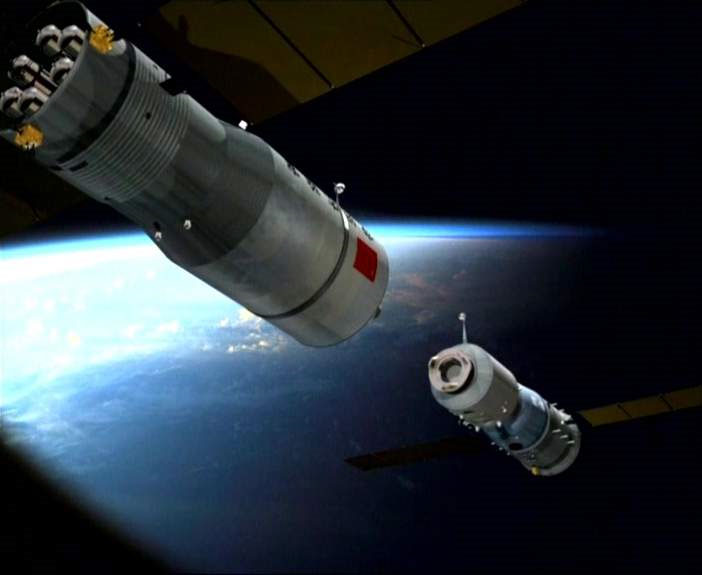Chinese ships paired with the module for the second time
Shenzhou 8 spacecraft and Thien Cung 1 experimental module successfully implemented the second joint in the space yesterday.

Illustration of Shenzhou 8 and module ships
Thien Cung 1 prepares to pair up in space.
Previously, Than Chau 8 and Thien Cung 1 joined for the first time on November 3. In the past 12 days, two devices flew around the earth before the Shenzhou 8 ship separated for about half an hour and then joined for the second time, Xinhua reported.
Beijing wants to install its own space station in 2020. To achieve that goal, they have to master the coupling technique in space. Previously only Russia and the US successfully implemented this technique in the 60s.
Pairing two devices in space is extremely difficult technology by two devices flying on the same trajectory at speeds up to several thousand kilometers per hour. The two devices must come close to each other gently and accurately, otherwise they will destroy each other.
Chinese scientists choose when two devices fly through the dark to make the second pair. That way they will know if China's coupling technique can be carried out in a low-light environment.
Many sensors and radars are installed on Shenzhou 8 to support the coupling process. Due to the changing light conditions during the process of flying around the earth, the biggest challenge is to minimize the impact of sunlight on the sensors.
The Than Chau 8 ship was launched on November 1, while the Thien Cung 1 module flew up from September 29. After the second match, Shenzhou 8 will return to Earth on November 17. In the following year, China will launch two ships Shenzhou 9 and Shenzhou 10 to orbit to join them with Thien Cung 1. One of the two ships will carry people.
- China goes long in conquering space
- Chinese spacecraft will return to Earth on June 29
- Chinese rockets fly on American music
- 2011: China launched the first module of the space station
- Hang Nga ships set a record high in space
- India launches unmanned space module weighing 3.7 tons
- Russian cargo spacecraft continuously broke the flight time record
- China successfully tested the Module for the future Moon Station
- China launched the first module for the space station
- The fifth visitor arrived on the ISS
- Why is the female astronaut at Thien Cung-1 last?
- New unmanned hi-tech ships will be built
 Van Allen's belt and evidence that the Apollo 11 mission to the Moon was myth
Van Allen's belt and evidence that the Apollo 11 mission to the Moon was myth The levels of civilization in the universe (Kardashev scale)
The levels of civilization in the universe (Kardashev scale) Today Mars, the sun and the Earth are aligned
Today Mars, the sun and the Earth are aligned The Amazon owner announced a secret plan to build a space base for thousands of people
The Amazon owner announced a secret plan to build a space base for thousands of people China launches Shenzhou-19 spacecraft to Tiangong station
China launches Shenzhou-19 spacecraft to Tiangong station  China's first female astronaut to walk in space
China's first female astronaut to walk in space  Shenzhou 10 and the space race
Shenzhou 10 and the space race  Chinese astronauts will lecture from the universe
Chinese astronauts will lecture from the universe  Chinese spacecraft will return to Earth on June 29
Chinese spacecraft will return to Earth on June 29  The Shenzhou spacecraft - 8 has returned to Earth
The Shenzhou spacecraft - 8 has returned to Earth 